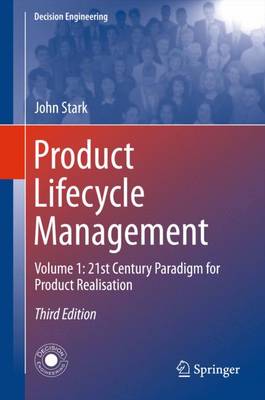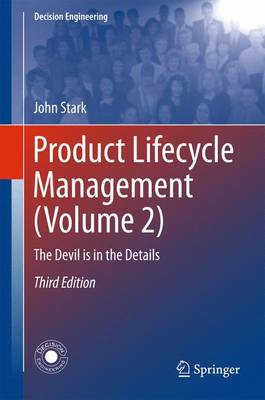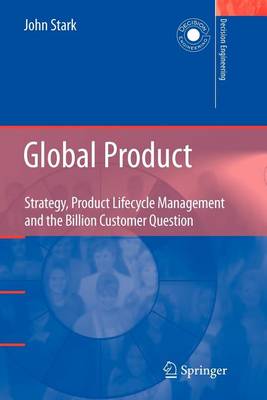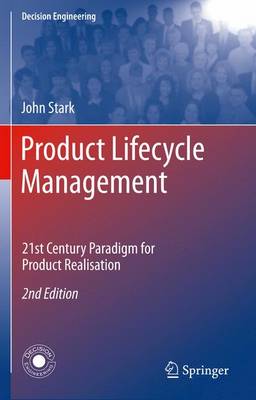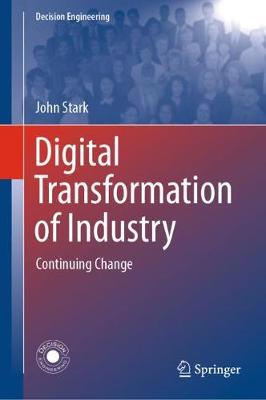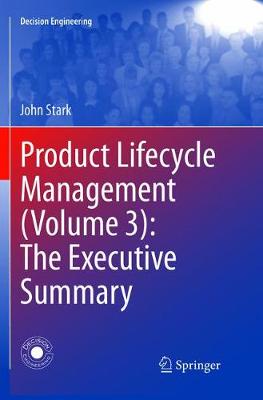Decision Engineering
6 total works
This second volume moves beyond a general introduction to product lifecycle management (PLM) and its principal elements to provide a more in-depth analysis of the subjects introduced in Volume 1 (21st Century Paradigm for Product Realisation).
Providing insights into the emergence of PLM and the opportunities it offers, key concepts such as the PLM Grid and the PLM Paradigm are introduced along with the main components of PLM and the associated characteristics, issues and approaches.
Detailing the 10 components of PLM: objectives and metrics; management and organisation; business processes; people; product data; PDM systems; other PLM applications; facilities and equipment; methods; and products, it provides examples and best practices.
The book concludes with instructions to help readers implement and use PLM successfully, including outlining the phases of a PLM Initiative: development of PLM vision and strategy; documentation of the current situation; description of future scenarios; development of implementation strategies and plans; implementation and use. The main activities, tasks, methods, timing and tools of the different phases are also described.
Based on interviews with top executives from companies of different sizes and in different industries, this book explains the benefits and challenges of Global Product Development. "Global Product" provides examples from many companies, draws conclusions about best practices, and shows how to manage the innovation, development and support of Global Products. The author is the President of John Stark Associates, a leading service provider in the Product Lifecycle Management (PLM) market, and has published numerous articles and books in the field.
The book: introduces PLM, a unique holistic view of product development, support, use and disposal for industry worldwide, based on experience with internationally renowned companies; shows you how to take full advantage of PLM, how to prepare people to work in the PLM environment, how to choose the best solution for your situation; provides deep understanding, nurturing the skills you will need to successfully implement PLM and achieve world-class product development and support performance; and, gives access to a companion www site containing further material.
This graduate textbook is focused on digital transformation. It answers key questions regarding: which technologies can be used to transform an organisation, which activities within an organisation can be transformed, and what the aim of digital transformation should be.
The content is divided into three main parts, the first of which offers an introduction to the topic, highlights fundamental examples of digital transformation, defines the terminology, and enables readers to quickly understand the main components of digital transformation. The second part of the book addresses examples of digital transformation from several industries, including:
- government;
- finance;
- health;
- manufacturing; and
- education.
The third and final section of the book describes the activities and processes within a typical digital transformation programme. The pedagogical approach to the process makes the book beneficial to both students who have never been involved in such a programme and practitioners who plan to implement digital transformation in their organisation.
Product Lifecycle Management (Volume 3): The Executive Summary
by John Stark
This third volume provides an executive overview of Product Lifecycle Management (PLM), and details the roles that executives play in PLM initiatives. This book also explains why PLM emerged, why it is so important, the principles of PLM strategy, and the typical steps in a PLM initiative. Throughout the book, the author presents examples and cases studies, demonstrating the various roles of executives in PLM initiatives. The coverage is informed by John Stark's experience of working with companies on more than 100 PLM initiatives.
The present book broadens the reader's understanding of PLM, nurturing the skills needed to implement PLM successfully and to achieve world-class product performance across the product lifecycle. The book provides the executive reader with a thorough explanation of PLM, and the required knowledge to lead or participate in a PLM Initiative.
